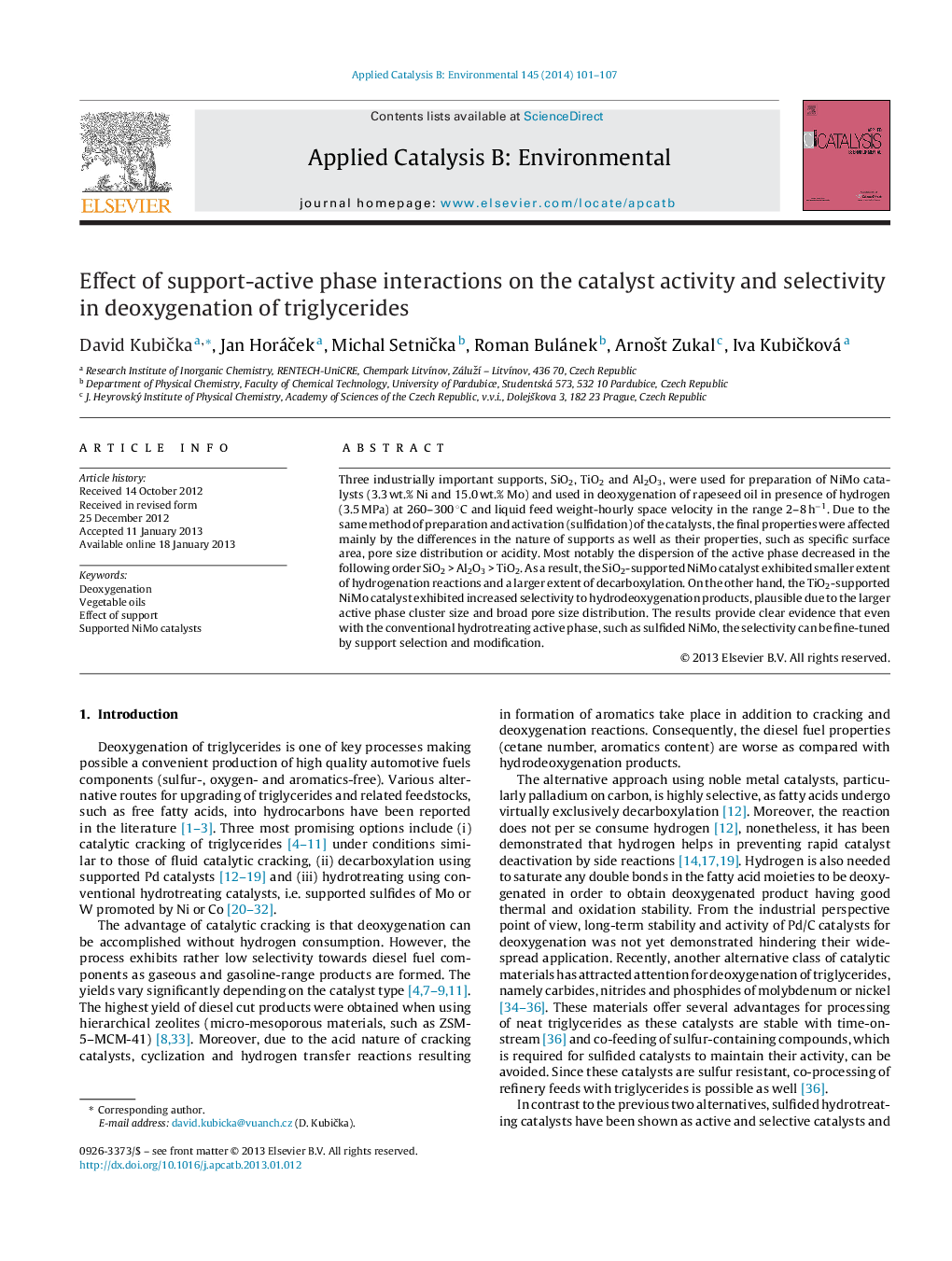| Article ID | Journal | Published Year | Pages | File Type |
|---|---|---|---|---|
| 45312 | Applied Catalysis B: Environmental | 2014 | 7 Pages |
Three industrially important supports, SiO2, TiO2 and Al2O3, were used for preparation of NiMo catalysts (3.3 wt.% Ni and 15.0 wt.% Mo) and used in deoxygenation of rapeseed oil in presence of hydrogen (3.5 MPa) at 260–300 °C and liquid feed weight-hourly space velocity in the range 2–8 h−1. Due to the same method of preparation and activation (sulfidation) of the catalysts, the final properties were affected mainly by the differences in the nature of supports as well as their properties, such as specific surface area, pore size distribution or acidity. Most notably the dispersion of the active phase decreased in the following order SiO2 > Al2O3 > TiO2. As a result, the SiO2-supported NiMo catalyst exhibited smaller extent of hydrogenation reactions and a larger extent of decarboxylation. On the other hand, the TiO2-supported NiMo catalyst exhibited increased selectivity to hydrodeoxygenation products, plausible due to the larger active phase cluster size and broad pore size distribution. The results provide clear evidence that even with the conventional hydrotreating active phase, such as sulfided NiMo, the selectivity can be fine-tuned by support selection and modification.
Graphical abstractFigure optionsDownload full-size imageDownload as PowerPoint slideHighlights► SiO2-supported NiMo catalyst augmented decarboxylation selectivity. ► TiO2-supported NiMo catalyst increased hydrodeoxygenation selectivity. ► Active phase-support interactions affected hydrogen consumption.
